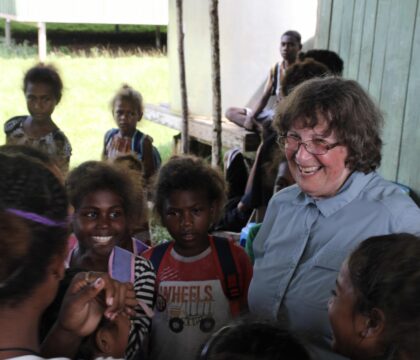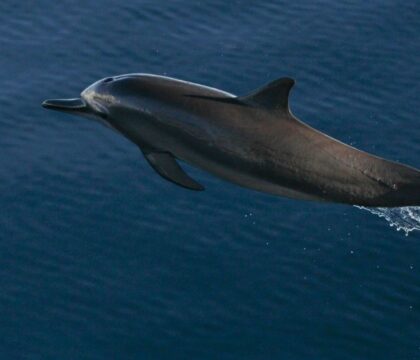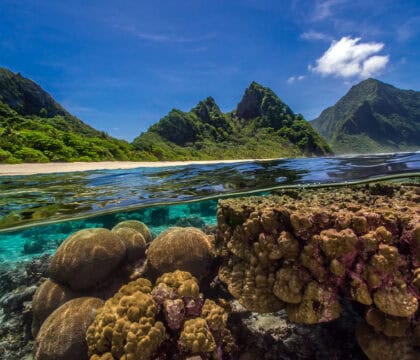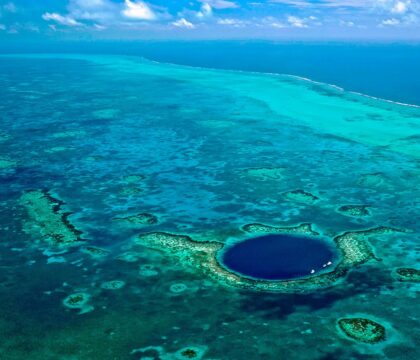March 3, 2014 • News Announcements, Program Updates
Greetings from Barra de Potosí, Mexico, where our inaugural field season is off to an exciting start! I look forward to sharing updates with you as our project gets off the ground, and I invite you to follow us on Facebook for more photos and updates.
Research!
Thanks to the generosity of the many donors who supported our crowdfunding campaign, we have been out on the water five days a week in search of whales and other marine wildlife. Our primary goal is to collect baseline data on humpback whales, including building a photo ID catalog, but we are also using the opportunity to collect data on other species of interest including dolphins and sea turtles. Check out our website for more background on our research goals.
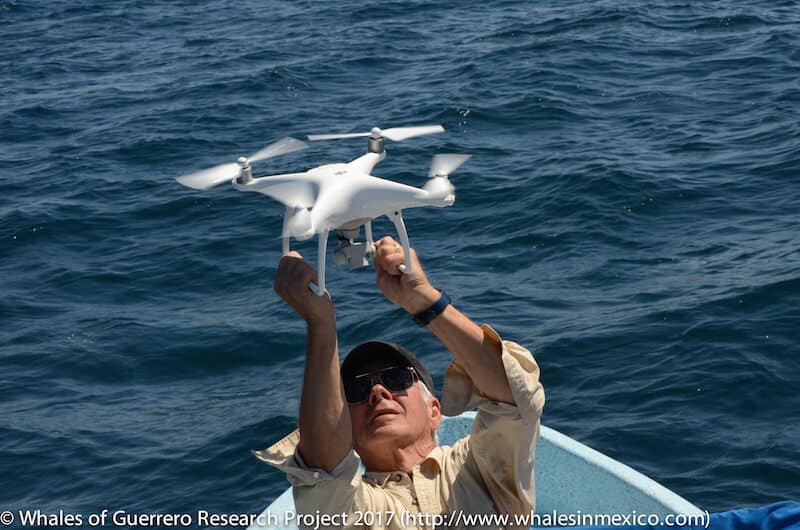
We’ve been seeing humpback whales about 60% of the time, turtles and dolphins almost every day, and have been recording wonderful whale vocalizations. I just made a recording of a full 24-minute song cycle of a humpback whale last week, whose vocalizations at different times throughout the song sounded like an out-of-tune cello, a cow, a tinny disco-themed synthesizer, raspberries, a creaking door, and Tuvan throat singing.
Although dolphins aren’t our primary research subjects, we recently recorded an underwater video of a pair of rough toothed dolphins predating on a mahi mahi. This is the third time we have spent a long period of time with rough toothed dolphins. Once we observed 6-8 rough toothed dolphins associating with an adult humpback whale for about 30 minutes. We also saw a group of about 10 of them two weeks ago, and one seemed very pleased about the yellowtail fish it had in its mouth, judging by the way it was displaying it to its companions and to us.
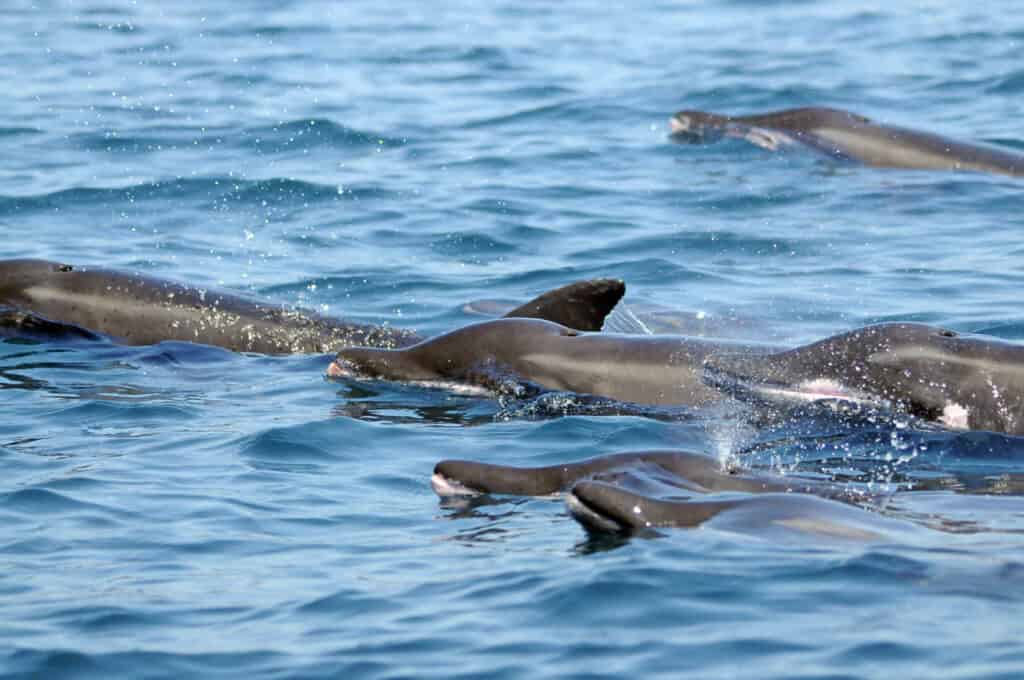
These sightings are really special because little is known about rough toothed dolphins. They are generally encountered beyond the continental shelf, but these groups were within two kilometers of the shore, making this a potentially promising area for rough toothed dolphin studies in the future.
Education!
Education is a big part of our efforts here. To that end, I recently played some of my whale vocalization recordings to a group of kids at the local village library. I wish you could have seen the wonder written all over their faces when they heard whales singing for the first time! Now, when I walk through the village, they zoom along beside me on their bikes making whale songs. I am flattered. This week we’ll hold a fourth workshop and share the 21 (!) fluke IDs we’ve collected so far, as we begin to teach the village about fluke identification and start the local catalog of humpback whale fluke IDs.
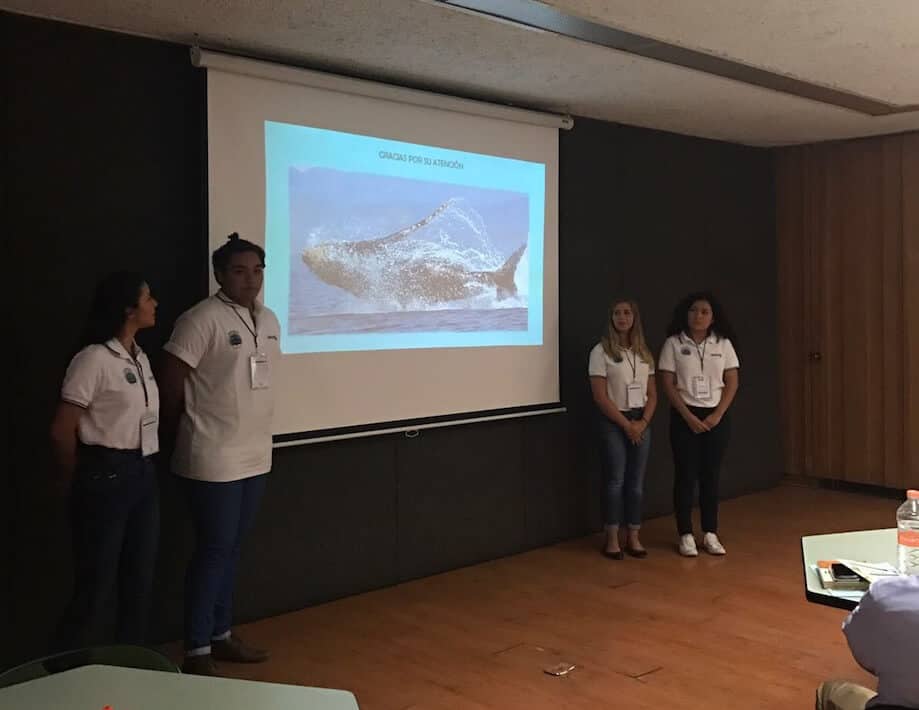
Kids are clamoring to go whale watching. Very few of them have ever seen a whale or dolphin up close in the wild even though they are just offshore. As kindergarteners, they get to go to the Delfinarium in Ixtapa to touch dolphins, but we have wild dolphins, right here, in this Bay. I want these kids to witness the bottlenose dolphin’s wild and free cousins, and so we will begin taking 1-2 kids with their parents out on the water with us for shorter periods as a part of the educational component of this project.
We also projected a short collection of underwater humpback whale videos onto the kindergarten wall, which is the gathering place for the village and played local whale songs for them. About 40 people came and I can’t walk down the street now without someone asking me when we will be playing whale movies again. It is one thing to see a whale from above; a blow, a dorsal fin, a bit of tail, fin or flukes if you are lucky. When people have the opportunity to see whales from below through underwater video, to observe them considering the surface as they spin and twirl in slow motion, to see a calf nestling in under its mother’s giant pectoral fin, or to witness a male whale suspended vertically below the surface, tail up and head down, sending out its song for others to hear – these are the images that spark people’s excitement and passion about whales for life. I hope we will be able to pull together another sequence of underwater clips of humpback whales for the wrap up event about the project we’ll be holding in the village at the end of March.
Up Next for Whales of Guerrero
In addition to this week’s workshop at the library, Pablo Mendizabal and I are getting ready to present the project to the boat operators, sport fishing and tour guides of Zihuatanejo and Ixtapa. This will help us to develop a whale spotting network and generate awareness about best boat practices around whales and the work we are doing on the water.

